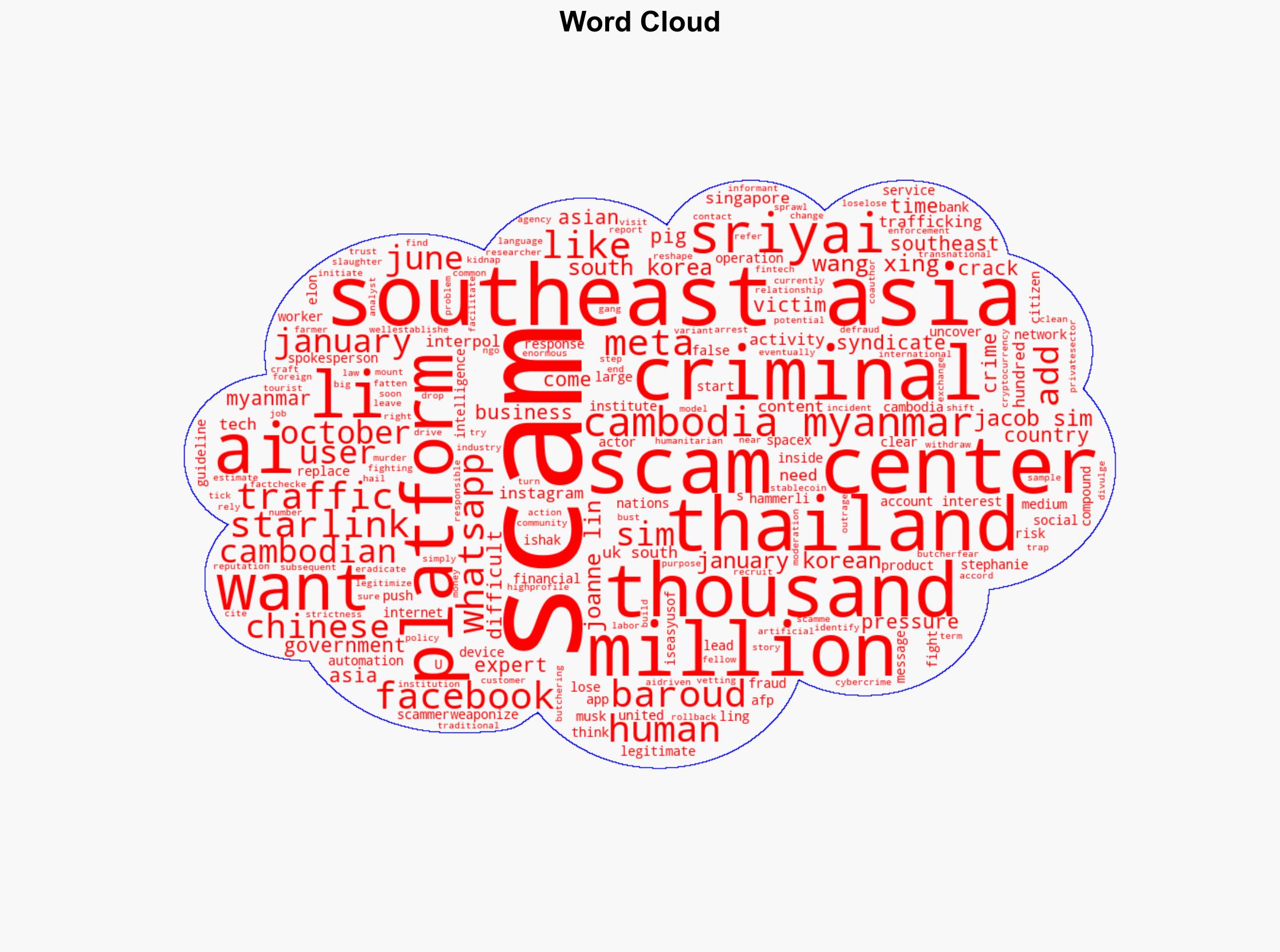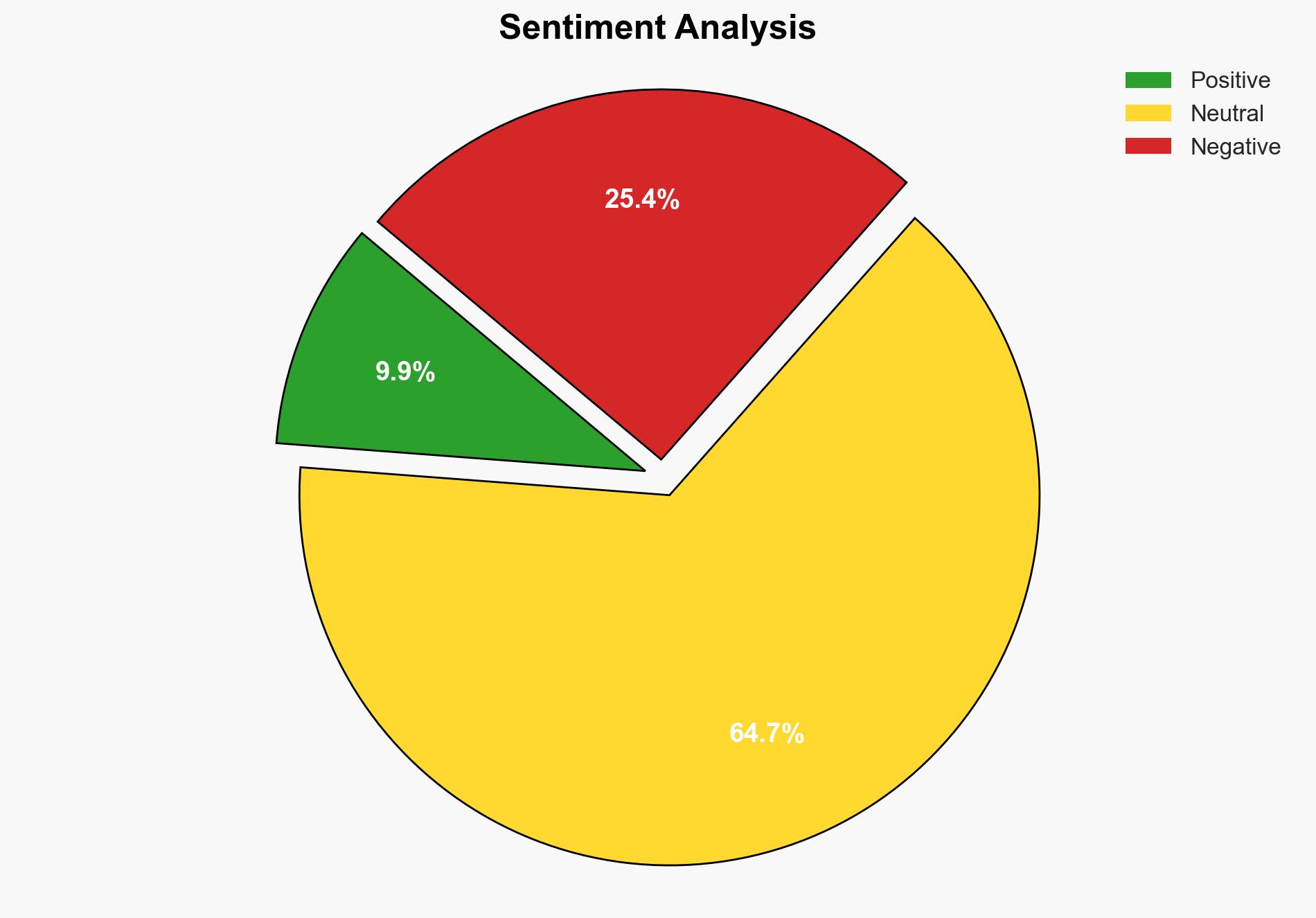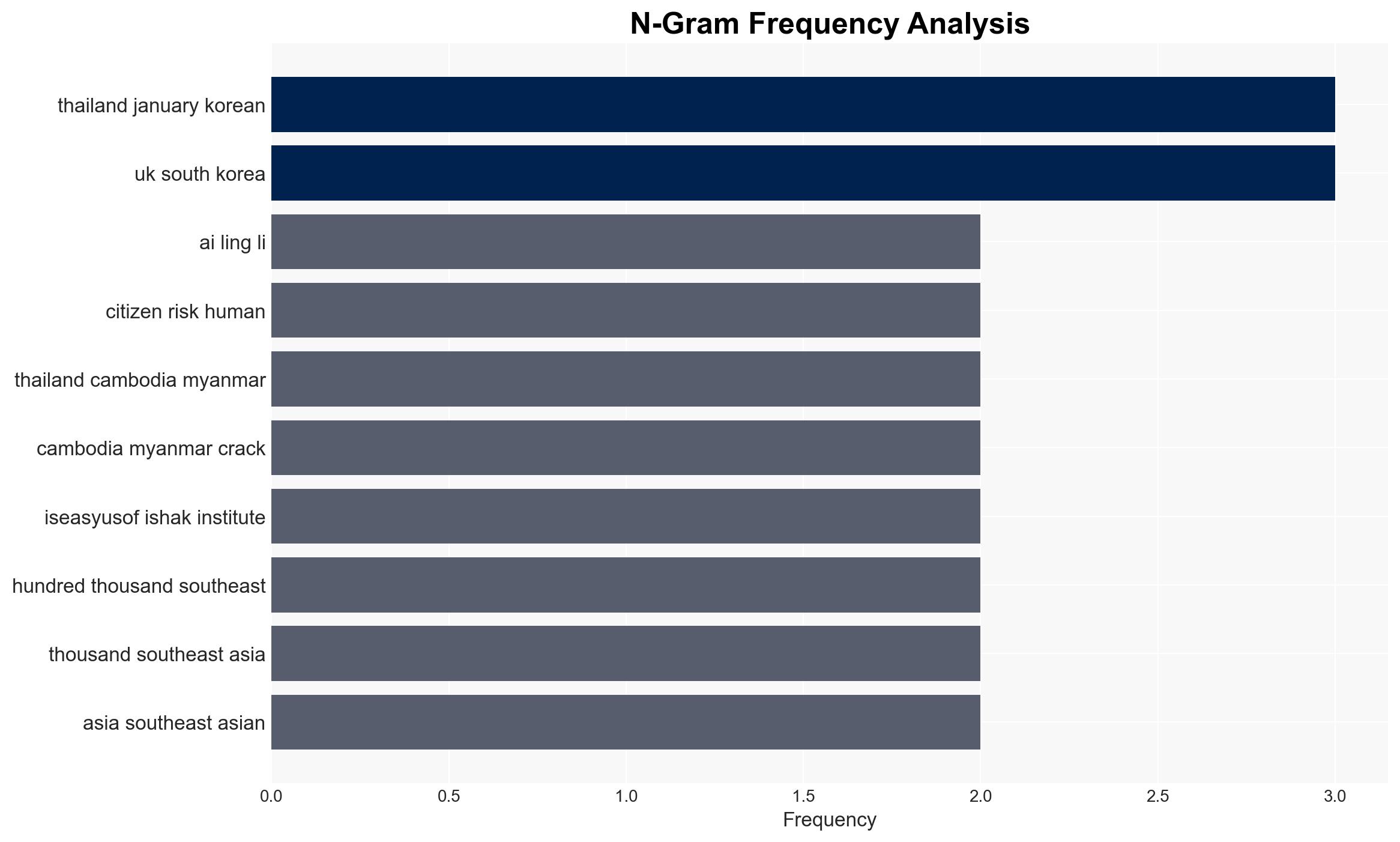AI may replace people in Southeast Asias scam complexesand that could undercut the drive to stop them – Fortune
Published on: 2025-11-20
AI-powered OSINT brief from verified open sources. Automated NLP signal extraction with human verification. See our Methodology and Why WorldWideWatchers.
Intelligence Report:
1. BLUF (Bottom Line Up Front)
The strategic judgment is that AI-driven automation in Southeast Asia’s scam complexes is likely to replace human labor, complicating efforts to combat these operations. This hypothesis is supported by current trends in AI development and the adaptability of criminal networks. Confidence level: Moderate. Recommended action includes strengthening international cooperation and enhancing AI monitoring capabilities to counteract the evolving threat.
2. Competing Hypotheses
Hypothesis 1: AI will replace human labor in scam complexes, leading to more sophisticated and harder-to-detect scams. This is supported by the rapid advancement of AI technologies and the potential for automation to reduce operational costs for criminal networks.
Hypothesis 2: AI will not significantly replace human labor in scam complexes due to the need for human interaction in building trust with victims. This hypothesis considers the limitations of AI in replicating nuanced human interactions necessary for certain types of scams.
Hypothesis 1 is more likely due to the ongoing integration of AI in various sectors and the potential for AI to enhance the efficiency and reach of scam operations.
3. Key Assumptions and Red Flags
Assumptions include the continued advancement and accessibility of AI technologies and the willingness of scam networks to invest in these technologies. Red flags include potential underestimation of AI’s limitations in replicating human interactions and the adaptability of scam networks to law enforcement efforts. Deception indicators may arise from misinformation campaigns by scam networks to obscure their operations.
4. Implications and Strategic Risks
The integration of AI in scam operations could lead to increased sophistication in scams, making them harder to detect and dismantle. This poses risks of economic loss, erosion of trust in digital platforms, and potential escalation in human trafficking as displaced workers seek alternative employment. Politically, failure to address these threats could strain international relations and cooperation.
5. Recommendations and Outlook
- Enhance international cooperation to share intelligence and best practices in combating AI-driven scams.
- Invest in AI monitoring and detection technologies to identify and disrupt scam operations.
- Engage with tech companies to develop robust content moderation and reporting mechanisms.
- Best-case scenario: Effective international collaboration and technological advancements significantly reduce scam operations.
- Worst-case scenario: AI-driven scams proliferate, leading to widespread economic and social disruption.
- Most-likely scenario: AI integration in scams increases, but enhanced monitoring and cooperation mitigate the impact.
6. Key Individuals and Entities
Ling Li, researcher and co-author on cybercrime; Stephanie Baroud, criminal intelligence analyst at Interpol; Jacob Sim, expert on transnational crime and human rights in Southeast Asia.
7. Thematic Tags
Regional Focus, Regional Focus: Southeast Asia
Structured Analytic Techniques Applied
- Causal Layered Analysis (CLA): Analyze events across surface happenings, systems, worldviews, and myths.
- Cross-Impact Simulation: Model ripple effects across neighboring states, conflicts, or economic dependencies.
- Scenario Generation: Explore divergent futures under varying assumptions to identify plausible paths.
- Network Influence Mapping: Map influence relationships to assess actor impact.
Explore more:
Regional Focus Briefs ·
Daily Summary ·
Support us





